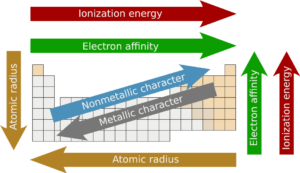
(Image from HuffPost.
Unlike other learning philosophies where the authority includes the environment, sociopolitical situation, dogma, and individual situation, Humanistic Learning revolves around the learner being the source of authority. This means the student determines the learning method and materials. This article looks at the Humanistic approach as presented by Abraham Maslow, Carl Rogers, and James F. T. Bugental.
Carl Rogers proposed the Experiential Learning Theory. Bugental proposed the theory of Existential-Humanistic Psychology, including the ?postulates of humanistic psychology, [which are ]:
- Human beings cannot be reduced to components.
- Human beings have in them a uniquely human context.
- Human consciousness includes an awareness of oneself in the context of other people.
- Human beings have choices and responsibilities.
- Human beings are intentional, they seek meaning, value, and creativity.?[1]
Most people will be familiar with Abraham Maslow?s Hierarchy of Needs. His research paper, ?A Theory of Human Motivation? emphasized that we work toward the attainment of a goal, whether it be getting food because we are hungry, desiring relationships for esteem or growth through self-actualization.
The Key Concepts
Humanistic Learning Theory, often called Humanism, focuses on the specific human capabilities including creativity, personal growth, and choice. Humanists believe people are good and noble. Maslow?s research into hierarchical needs is a major concept in this learning theory, especially Self-Actualization, as it is only at this level the student can truly experience growth.
Humanistic Learning Theory can be summarized this way[2]:
- Learners can be trusted to find their own goals and should have some options or choices in what they learn at school.
- Students should set their standards and should evaluate their work.
- The school experience should help students to develop positive relations with their peers
As we will see later in this article, the Humanistic approach is learner-centric, with the emphasis on the individual?s potential rather than the specific learning materials, sowing for a meaning and useful learning experience the student can apply across many situations.
But how does Humanistic Learning Theory affect students, teachers and the learning process?
The Role of the Learner
Ideally, learning should be an active process, where the student is engaged with the learning activities to acquire the knowledge specific to their situation. Since a major theme is the learner being the source of authority, the learner determines what learning materials are used, and how they will learn the material. They could choose to read, listen to speeches, watch movies or practice what they have learned through social interactions or by producing a specific output.
The learner also establishes the quantity of learning, as in how much do I need to learn about a specific subject. But making the correct or incorrect choice in their learning decisions rests with the student and not the teacher. This reinforces the student as the source of authority.
The Role of the Teacher
Just because the learner is the source of authority and makes the decision about what and how they will learn something, doesn?t negate the need for the teacher.
The teacher assumes the role of a coach or facilitator to assist the student in establishing and using their learning strategy to achieve their goal. Doing this means the teacher must be aware of the student?s unique needs, to be effective at supporting the student in acquiring the desired knowledge.
By understanding the student?s unique needs, the teacher can assist in designing the strategy to support the individual student?s intellectual and emotional development. Creating a non-threatening and supportive environment is important to this development.
While the student identifies the learning methods and materials, the teacher needs to ensure the learning activities are related to actual life experience, so the student can apply the learning to their daily living, which is a key concept in Roger?s Experiential Learning Theory.
How Does Learning Take Place
Bugental proposed learning occurs through meaningful living and studied the explicit and visible behaviors resulting from the subjective internal processes occurring in the learner. A key point is emphasizing the differences between individual learners.
Rogers viewed every individual experience is a logical event and different for every individual. From this individual viewpoint, the learner is encouraged to form their perspective and meaning through their experiences and beliefs. This makes each experience unique to the learner. Rogers also emphasized the importance of acquiring experience and knowledge from the environment, allowing the learner to form both positive and negative self-concepts about specific situations.
(For a view of Roger?s Experiential Learning Theory, see my Medium article.)
Principles Of Rogers?s Approach In Education.
Rogers established several cornerstone principles to his approach. These are learning is focused on the learner, and the learner has the freedom to choose. Additionally, learning should be considered as a curiosity to know something, and the learner should be encouraged to follow their curiosity.
The effectiveness of the learning process is based upon the learner taking the initiative to be fully engaged, follow their curiosity and find learning strategies and materials o support the learning objective.
References
[1] James Bugental ? Wikipedia
[2]Comparing Learning Theories ~ Behaviorism, Cognitivism, Constructivism & Humanistic
Theory Into Practice Database
Maslow Hierarchy of Needs
Experiential Learning
About the Author
Chris is a highly-skilled Information Technology AWS Cloud, Training and Security Professional bringing cloud, security, training and process engineering leadership to simplify and deliver high-quality products. He is the co-author of more than seven books and author of more than 70 articles and book chapters in technical, management and information security publications. His extensive technology, information security, and training experience makes him a key resource who can help companies through technical challenges.
Cross-Posting
This article has been cross-posted to LinkedIn and Medium.
Copyright
This article is Copyright 2019, Chris Hare.


![[FIGHT-TV]**Cormier-Miocic 2: LIVE STREAM (UFC 241 GAME)](https://911weknow.com/wp-content/themes/mts_myblog/images/nothumb-myblog-related.png)